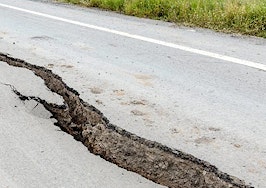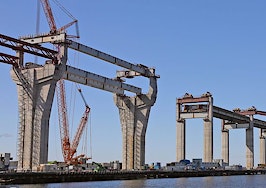- The infrastructure test: In what tangible and measurable ways will a new project improve commerce?
President Trump and the Democrats may reach agreement on one initiative soon: Spending a trillion bucks on infrastructure.
Since it will be a bipartisan deal, let’s be fair: The Democrats’ fixation on an infrastructure splurge is just as mistaken.
So, what’s wrong with a big effort to repair our visibly tired roads, bridges, airports, to install world-class IT services, and to provide jobs and economic stimulus?
First, don’t re-make here in the U.S. the mistakes made in Japan, China, and parts of Europe and the developing world. For the sake of economic stimulus (and sometimes simple pride) the most common infrastructure error has been to built without investment return.
“Looks great” is not an investment return. Nor is “new.” All infrastructure investment should survive this test: In what tangible and measurable ways will a new project improve commerce, and for how long, and better than cheaper alternatives?
Without investment return, we’ll get the same sugar-high as elsewhere. The spending will add to GDP, and if we are incredibly lucky one dollar in GDP for one dollar spent. Current experience in China is falling below 50 cents. Japan’s 30-year sugar-spout gave us the term, “bridge to nowhere.”
But what about jobs? We have history here, some of it admirable. FDR’s Civilian Conservation Corps did good work, ultra-low tech like reforestation, and re-employed millions who were destitute, literally starving and homeless not by choice.
However, most of America’s work in the 1930s was manual — perfectly dignified, but with our hands on farms and farm support, even production lines with wrenches in hand were a new thing.
In the 1930s putting men (as most were) back to work with their hands got them back on their economic feet.
Infrastructure work is construction work, 1930s or now. “Shovel-ready,” we say. If I’ve been shaken out of my manufacturing job by foreign competition or automation, you’re going to hand me a shovel?
More than half of U.S. counties are losing population — small-town stores, schools, and hospitals closing. You’re going to hand a shovel to an out-of-work teacher? Youth graduating from school, unable to find work better than Starbucks… “Here, kid — here’s your shovel.” Our young and old need training and apprenticeships, not shovels.
But our infrastructure really does need help, right? The American Society of Civil Engineers (ASCE) this year gave a D+ grade for U.S. infrastructure. Meaning no offense to the ASCE, and it would be OK if an engineer moved in next door to me… if you let a group of engineers decide how much work you need to do, you’re broke.
Engineers are a great resource, even for cost-containment, but if you turn loose engineers to grade you on how you’re doing on a scale of infrastructure utopia, you’ll recreate our health care system.
But why can’t we have transportation systems like Europe? Because we are huge. Germany is half the size of Texas. You could drop Europe down in our Great Plains and have to look for it.
Trump proposes “public-private partnerships” to fund infrastructure — what about that? Money is money, and none is free. The cheapest financing is always public money, especially if borrowed. Private investors want to earn a multiple of the cost of municipal or Treasury bonds. If a project is worth doing, fund it as cheaply as possible. Low-hanging funding fruit: tolls and gasoline taxes; plenty of money in plain sight.
“Plenty of money?” The Congressional Budget Office estimates U.S. government infrastructure spending at all levels including state and local at $450 billion annually. That’s three-quarters of the annual cost of the Department of Defense — mentioned just for magnitude, and of course many disagree on priorities.
The best public policy ahead: Focus on productivity. Be sure that any physical investment will be productive, and above all else help our people to compete in a global marketplace.
Not with shovels.
Lou Barnes is a mortgage broker based in Boulder, Colorado. He can be reached at lbarnes@pmglending.com.





